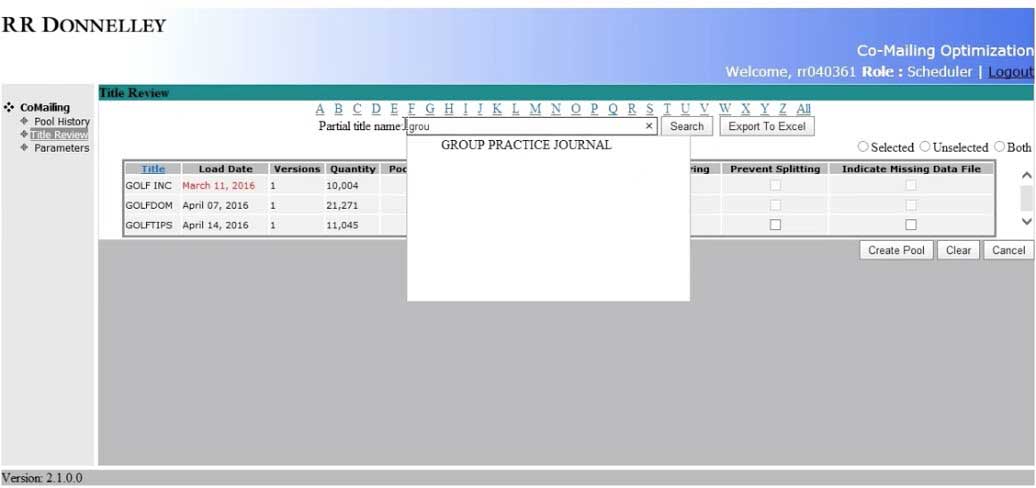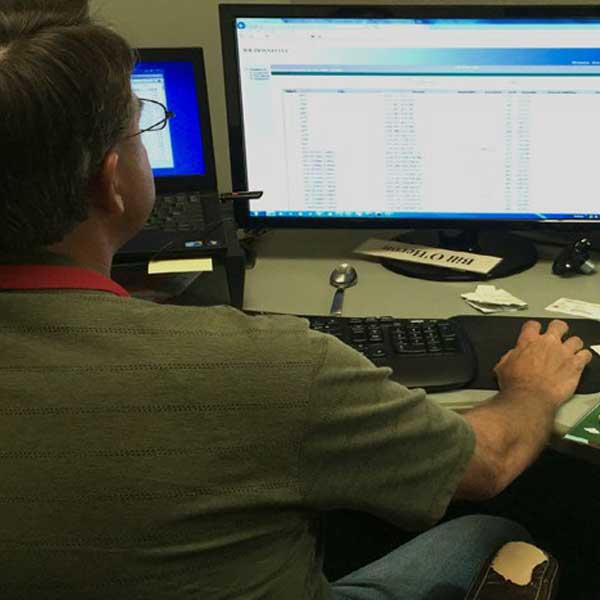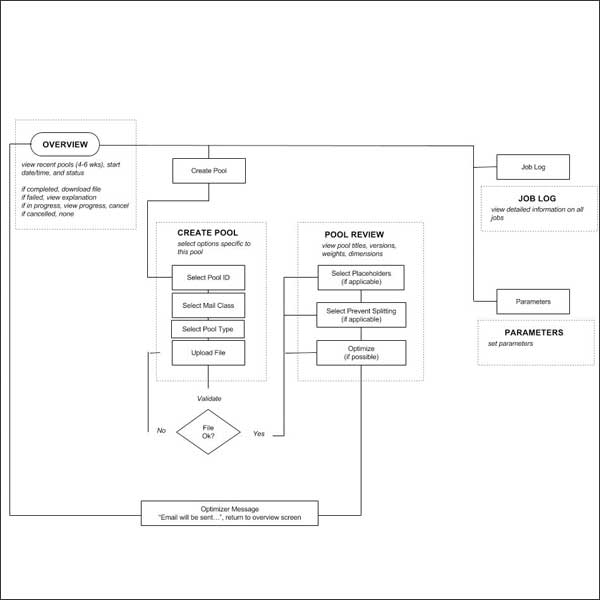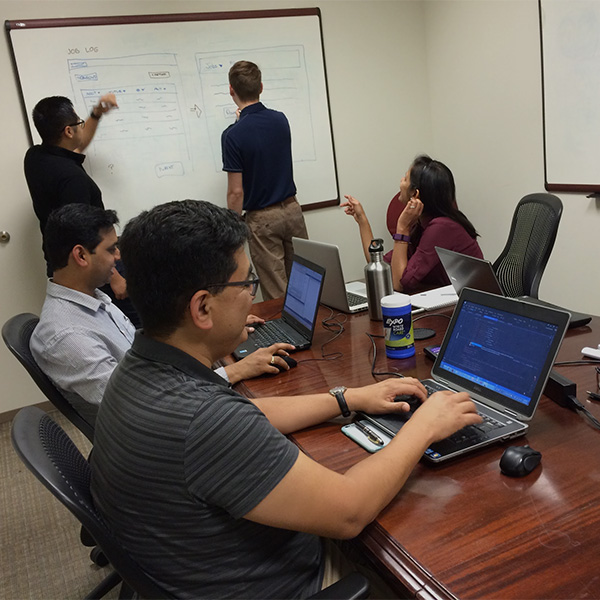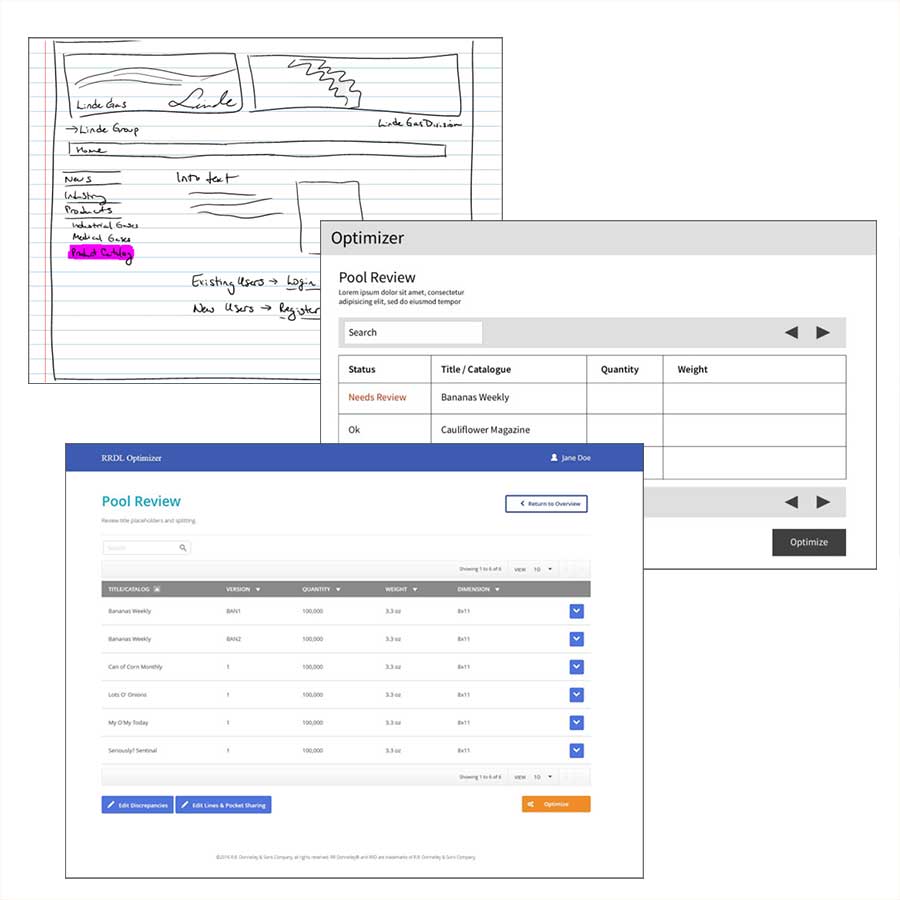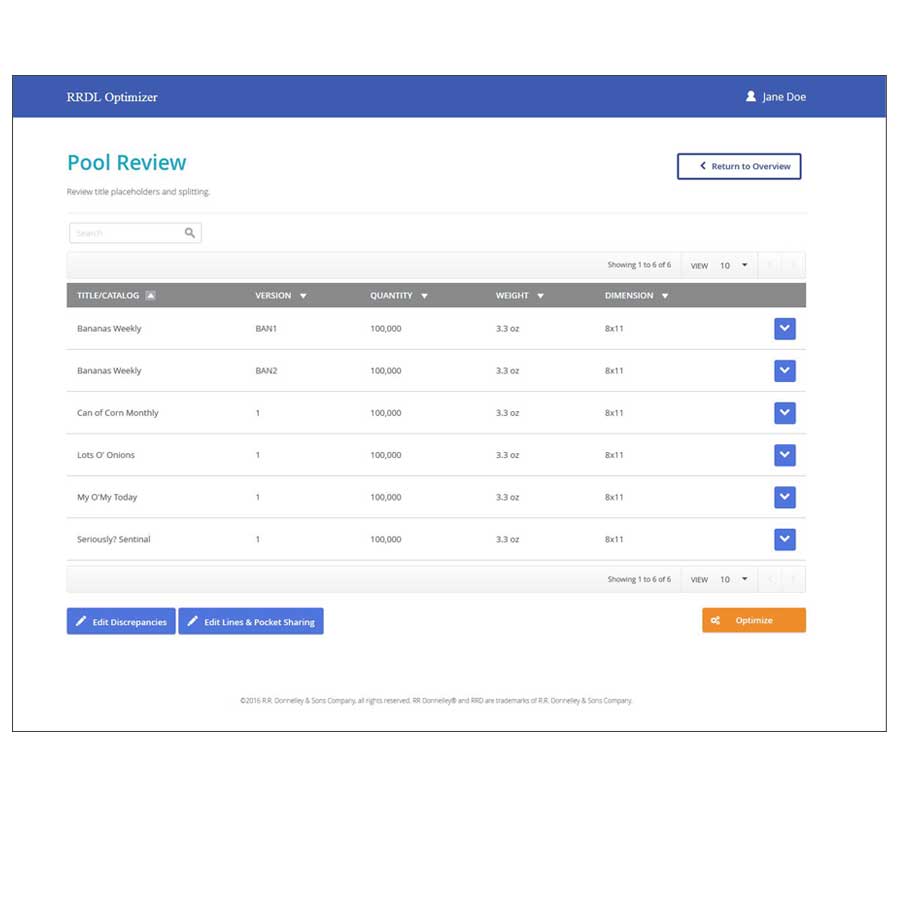UX Case Study: RRD Optimizer Design Sprint
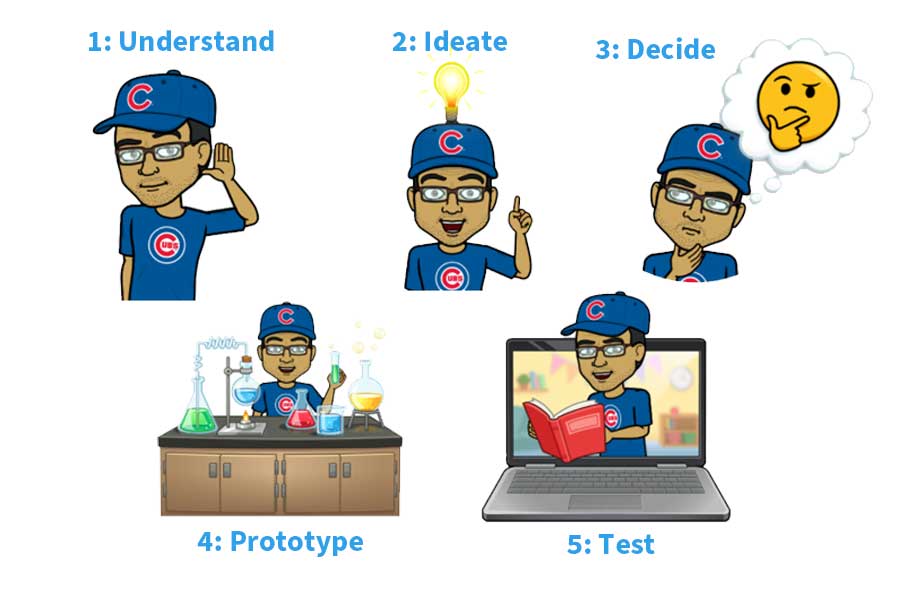
My Role: I lead this project, working closely with a UX designer
Project Duration: 10 days
The challenge RR Donnelley tasked us with the challenge of improving optimizer, a legacy application. Optimizer is an application that calculates the optimal sorting order for mass mailings and postage rates along factory floor production lines for their Co-Mailing process. The application was in use for many years and end-users had grown accustomed to the many pain-points and inefficiencies caused by manual inputs and unnecessary steps. From beginning to end, a typical run of the application took between 1 and 2 hours to complete.
The idea was to gather the product team into a room without any distractions, which meant no email, no mobile phones, no calls, or interruptions from other meetings so that we could completely focus on solving a redesign of the product.
